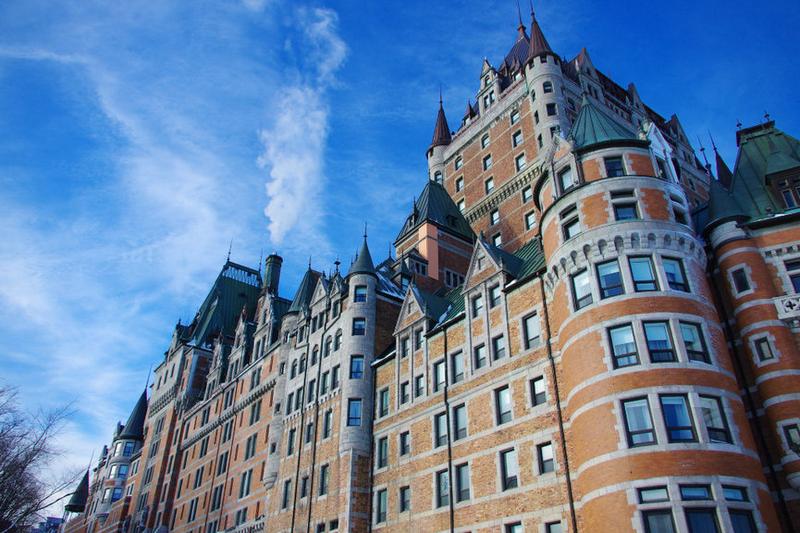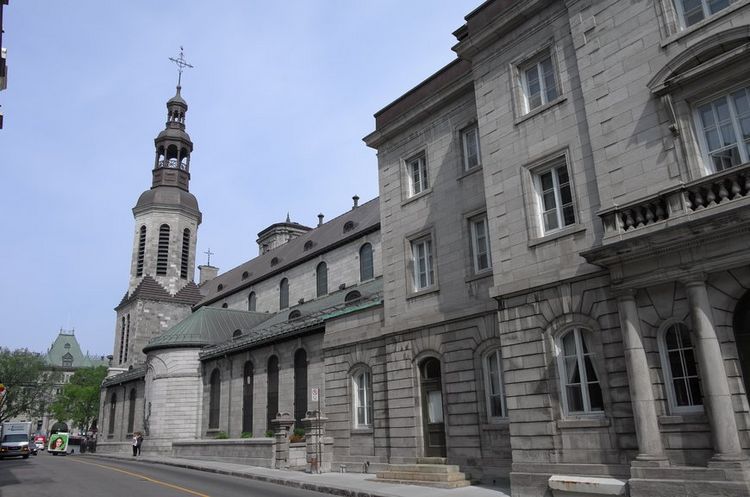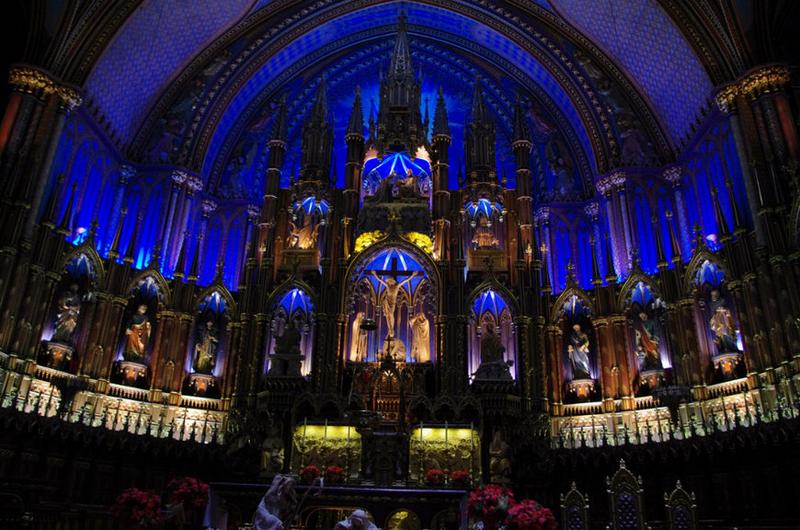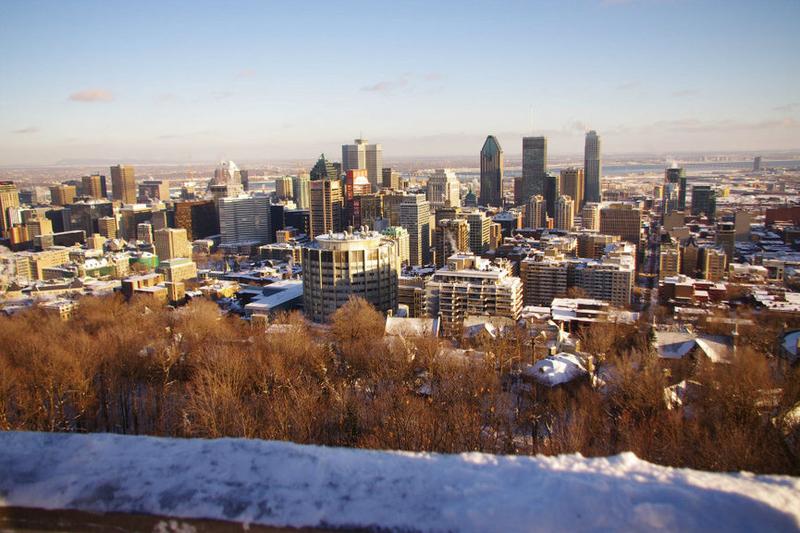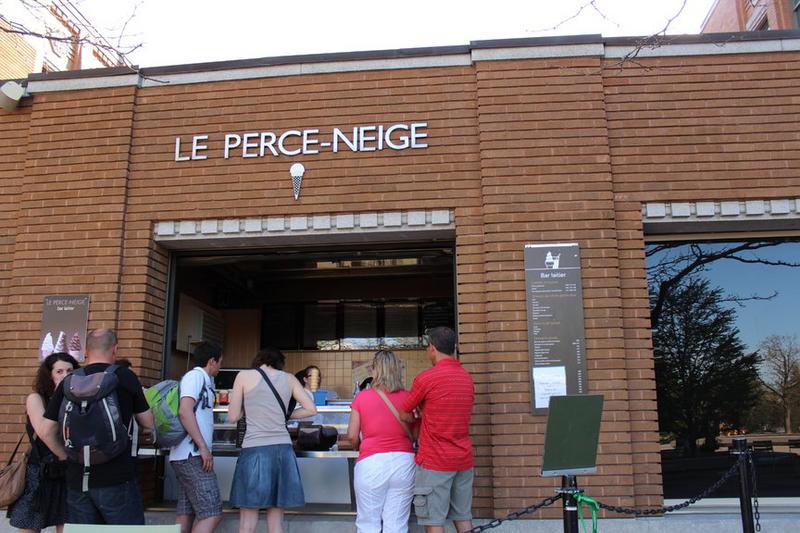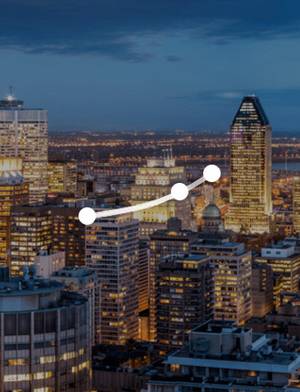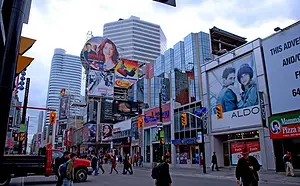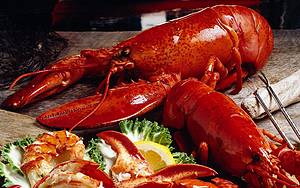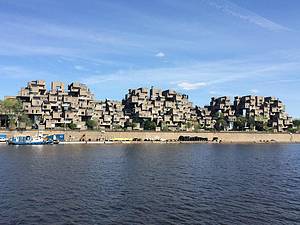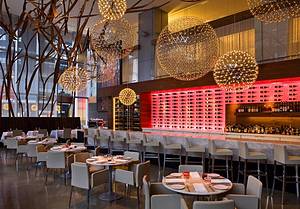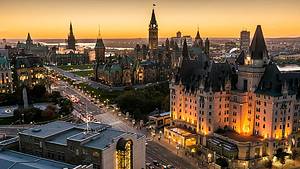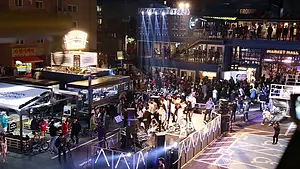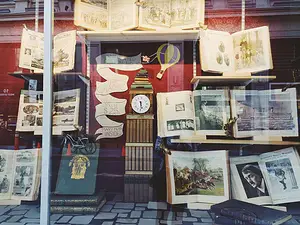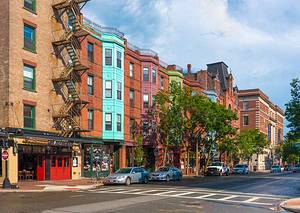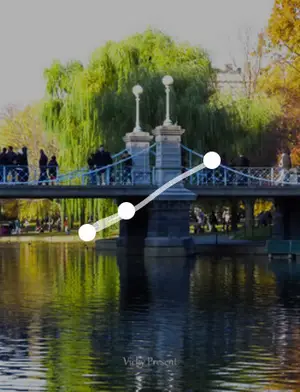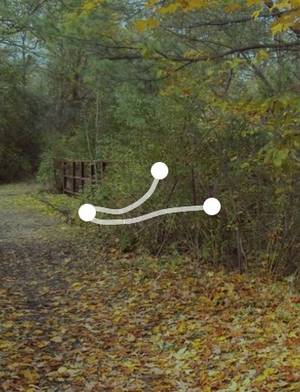King's Avenue Classical 4-day Tour
2 cities |
10 attraction(s) |
total distance 48
km
 TIPS
TIPS
Day1
Day2
Day3
Day4
Day1: Quebec City
3 attraction(s) ·
1 km
1
Old Quebec is a charming neighborhood with a French touch, featuring historic buildings and many exquisite shops. Walking around here is a delightful experience.
1
km
3
Notre-Dame-de-Quebec Basilica-Cathedral
After walking through Rue du Trésor, you will reach Rue de Buade. Turn left and walk about 50 meters, and you will see a magnificent Baroque-style cathedral called the Notre-Dame de Québec Cathedral. This is the largest church in Québec and was built in 1633. It is the oldest church in North America (north of Mexico). The church has undergone several fires and earthquakes, and the current building was reconstructed in 1925. The most distinctive feature of the cathedral is its two different-shaped spires on the left and right sides. To the north of the cathedral, there is the Québec Seminary and the old Laval University.
Day2: Quebec City
2 attraction(s) ·
31 km
1
Located about 1 kilometer north of Quebec City, this is formed by the Montmorency River dropping vertically from a 83-meter high cliff, which is 1.5 times the height of Niagara Falls and is very spectacular. In winter, the waterfall is reduced to a thin stream, with the rest of it frozen, forming a white jade ice wall. Adventurous people often come here to climb. There are stairs along the cliffside near the waterfall, as well as many close-up viewing paths, gazebos, and bridges, allowing visitors to better appreciate the magnificent scenery of the waterfall. There is an elegant building next to the waterfall, a French restaurant belonging to the waterfall, serving delicious French cuisine and local Quebec dishes.
31
km
2
Sainte-Anne Canyon is a sedimentary rock canyon located 40 kilometers from Quebec City. It is about 40 kilometers east of Quebec City, along the Sainte-Anne River, passing by Montmorency Falls. It is a beautiful and magnificent scenic spot and has been honored as Canada's best "outdoor natural attraction". It is an excellent area for viewing maple leaves. There is a scenic bus at the entrance of the canyon to take visitors to the waterfall.
Day3: Montreal
3 attraction(s) ·
9 km
1
Notre-Dame Cathedral, the largest church in North America, was built in 1829. It is located across from Döllinger Square and is a neo-Gothic Catholic church that can accommodate 5,000 people. The tower on the west side of the church also features the oldest giant clock in North America. The exterior of the church is magnificent and solemn, while the interior is grand and luxurious. The spacious and tall hall, blue ceiling, and stained glass windows, representative of neo-Gothic architecture, are all decorated with artistic details that reflect the wealth of "God." The hall leads to more smaller halls, which are even more luxurious. The church also houses a religious museum that showcases religious art, vestments, etc. Among the exhibits, the exquisite silverware stands out the most. People speak softly and walk quietly in the church, influencing each other in the solemn atmosphere.
1
km
2
The Old Town is the main tourist attraction in Montreal. It is an area bordered by Berri Street and McGill Street to the east and west, and the St. Lawrence River and St. Jacques Street to the north and south. It was once a busy port 300 years ago, but now it is mainly focused on tourism. Walking through the busy harbor of the Old Town, you can see luxurious sightseeing carriages adorned with flowers, passing by exquisite French landscapes and ancient castles. The crisp sound of horse hooves fills the streets with joy and a sense of spring, as if bringing back the old European charm. Walking through the streets, the shimmering, jumping, changing, and moving lights can be both dazzling and bewildering. Various cultural events and festivals, including jazz festivals and the renowned Montreal International Film Festival in August, attract millions of enthusiasts from around the world. In addition, there are various other festivals such as beer festivals, alternative film festivals, French music festivals, and international culinary festivals. Whether it is delicate and exquisite or majestic and grand, every architectural design in the Old Town of Montreal is a beautiful work of art. It is truly a sight to behold and brings endless beauty and enjoyment.
8
km
3
Mount Royal is the tallest peak in Montreal, established in 1870. It covers an area of 101 hectares and was designed by the famous designer Frederick Law Olmsted, who also designed New York's Central Park. The park retains the natural beauty of Mount Royal, and two lookout points offer charming views of the city. La Fontaine Park is the main green space in the Mount Royal area, covering 40 hectares. The park features two artificial lakes surrounded by maple trees, making it a beautiful spot for maple leaf viewing in Montreal. There are also walking and biking paths along the lake, perfect for picnics.
Day4: Montreal
2 attraction(s) ·
8 km
1
The Montreal Museum of Fine Arts opened in December 1912 with only one building on the north side, designed by architects Edward and William S. Maxwell. It has a neoclassical architectural style, resembling a temple. The museum has continuously expanded, and in 1991, it expanded to the south, connecting the underground through tunnels. The southern expansion was designed by architect Moshe Safdie, who is known for his works in many museums and important public buildings in Canada, such as the Quebec Museum of Civilization, the National Gallery of Canada, and Toronto Pearson Airport.
Currently, the Montreal Museum of Fine Arts is divided into four sections:
1. World cultures: mainly Asian art, Islamic art, Mediterranean archaeology, early American art, African totems, and bronze exhibition halls.
2. Decorative arts and design: mainly contemporary installation artworks, as well as some Renaissance artifacts.
3. International Art: many important works are displayed in this gallery, including exhibits from the Middle Ages to the Belle Epoque period of France, artifacts from the Napoleon Dynasty (including a bronze cast of Napoleon's face at the time of his death), and modern avant-garde art. It also houses works by famous artists such as Picasso, da Vinci, Rembrandt, Renoir, Rodin, and Dali. There is also an art education gallery at the entrance of the first floor, with many fascinating murals on the walls. This gallery is often used as a main exhibition space for touring exhibitions, such as the Rodin Museum exhibition in 2015.
4. Quebec and Canada Art: this section focuses on Inuit art and the art development of colonial and post-colonial Canada.
8
km
2
The Montreal Botanical Garden (French: Jardin botanique de Montréal) is a large botanical garden located in Montreal, Quebec, Canada. It covers an area of 75 hectares and includes themed gardens and greenhouses. The garden is considered one of the most important botanical gardens in the world, with a wide variety of plants and facilities. In 2008, it was certified as a national historic site of Canada. The garden was established in 1931 and spans 730,000 square meters, featuring French garden style as the main theme. It consists of 10 greenhouses and 30 outdoor gardens with different themes, housing over 26,000 plant species, making it the largest botanical garden in North America. The Mosaïcultures reception hall serves as the entrance to the greenhouse exhibition area. The bonsai collection donated by Mr. Wu Yisun in 1984 has made the bonsai area the largest exhibition area outside of Asia. The tropical rainforest greenhouse showcases a dense forest of creeping, climbing, and epiphytic plants. The arid regions greenhouse mainly exhibits succulent plants such as aloe from Africa and cacti and agaves from the Americas. Next to the greenhouse area of the Montreal Botanical Garden is the Dream Lake Garden, a Chinese-style garden in the architectural style of the Ming Dynasty. It covers an area of 25,000 square meters and was co-built by the cities of Shanghai and Montreal in 1991. The name "Dream Lake" sounds similar to "Montreal" in Chinese, symbolizing the friendship between these two sister cities.

